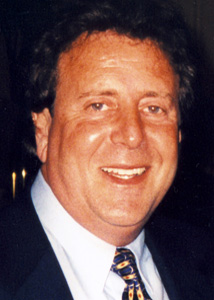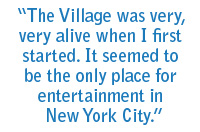 Israeli-born Danny Bensusan opened The Blue Note on West Third Street in 1981. Featuring jazz greats as well as a host of younger artists, the club has become both an institution and a destination. In the ensuing years, he’s opened up BB King’s and the Highline Ballroom here in the city as well as Blue Note clubs in Japan and Milan. In addition, he owns a jazz recording label, Blue Note Live.
Israeli-born Danny Bensusan opened The Blue Note on West Third Street in 1981. Featuring jazz greats as well as a host of younger artists, the club has become both an institution and a destination. In the ensuing years, he’s opened up BB King’s and the Highline Ballroom here in the city as well as Blue Note clubs in Japan and Milan. In addition, he owns a jazz recording label, Blue Note Live.
For entrepreneur Danny Bensusan, opening the Blue Note jazz club on West Third Street in 1981 was strictly a business decision.
“I always loved jazz music,” he says. “But I didn’t open the Blue Note for the love of jazz. I opened it because I thought the timing was right for it. Prior to that disco was the hot scene. It was the era of Studio 54 and such and that’s where most people spent their entertainment money. In fact, when I bought the building on West Third Street it housed a disco called Gatsby’s. Then disco started to fade, as people grew tired of it. I realized that live music was coming back. So I decided to go for the jazz even though I didn’t know anything about it. However, I hired people who did.”
“It wasn’t easy in the beginning,” he admits. “It took a year and half of losses until we figured out who the musicians were that would bring in the crowds. Most of our early musicians were good for a 100-seat room. However, I had 250 seats and I needed musicians who could fill them. It was difficult, but we managed with the help of people like Ray Brown, the bass player. He helped us to get Oscar Peterson and others of his caliber. Then we started looking for musicians who would attract not only the audience but the media as well. And we began presenting double bills, combining musicians who had not worked together in a long time. That attracted a lot of media and at the same time an audience. We got over the hump in our second and third year in business.”
So what was Greenwich Village like in those days? “The Village was very, very alive when I first started,” Bensusan remembers. “It seemed to be the only place for entertainment in New York City. Everything was down in the Village: clubs, cafes, restaurants. To walk late at night in the Village was like daytime anywhere else; it was always crowded. Then other areas in New York started to expand—such as Soho and Chelsea—and they took away some of the attraction of the Village.”
 “At the same time,” he continues, “Community Board 2 did a lot of things that did not support businesses that wanted to bring good entertainment to the Village. So every corner turned into a Korean supermarket! That’s because you don’t need the Community Board to open one. You just do it. To open a nice club you need the approval of the Board, a liquor license, and a lot of things that the Board does not support. They couldn’t care less if the Blue Note is in the Village or not. They don’t care about real venues that bring true American art into the community.”
“At the same time,” he continues, “Community Board 2 did a lot of things that did not support businesses that wanted to bring good entertainment to the Village. So every corner turned into a Korean supermarket! That’s because you don’t need the Community Board to open one. You just do it. To open a nice club you need the approval of the Board, a liquor license, and a lot of things that the Board does not support. They couldn’t care less if the Blue Note is in the Village or not. They don’t care about real venues that bring true American art into the community.”
Talking about some of the challenges that face the Village, Bensusan says, “The Village has always had its ups and downs. But it has one downfall: most of the places in it are small. When people started to move into Soho they opened up big galleries because it had big spaces. It was the same with Chelsea and the Meatpacking area, which also have huge spaces for clubs and galleries. You don’t have that in the Village.” Then he pauses to think for a moment. “Actually, if the places are big then NYU already took them!” he says, laughing.
Yet Bensusan thinks, like most neighborhoods, the Village will bounce back as a nightlife destination. “Those small boutiques, clubs, and restaurants are going to come back to the Village,” he predicts. As for the Blue Note itself, at this point it’s an institution on the radar of tourists from around the globe. Part of that is because of the good relationships he’s had with the artists who have appeared there over the years. “They loved the room,” he says. “They loved the sound, and they had been treated well. The Blue Note was—and continues to be—their home away from home.”
Photo: Danny Bensusan
